On October 15, Medellín opened a new travía line (tramline or streetcar line) addition to the Medellín Metro.
The new T-A metro line runs 4.3 km east from the San Antonio metro station to the Buenos Aires neighborhood and includes several new T-A stations.
The new travía line was built over a two-year period with an investment of $300 million USD.
The travía line is currently running in training mode and is free until November 30 when the new tranvía line starts full-time operations. On October 20, President Santos was in Medellín to inaugurate the new tranvía line.
The new tranvía now runs Tuesday to Sunday from 8 a.m. to 2 p.m. Starting on November 30, the tranvía will reportedly start full-time operation running daily from 4 a.m. to 11 p.m.
The new tranvía can reach speeds of up to 44 mph but during training and while residents are getting used to the new tranvía line, the tranvía reportedly will run at 25 mph.
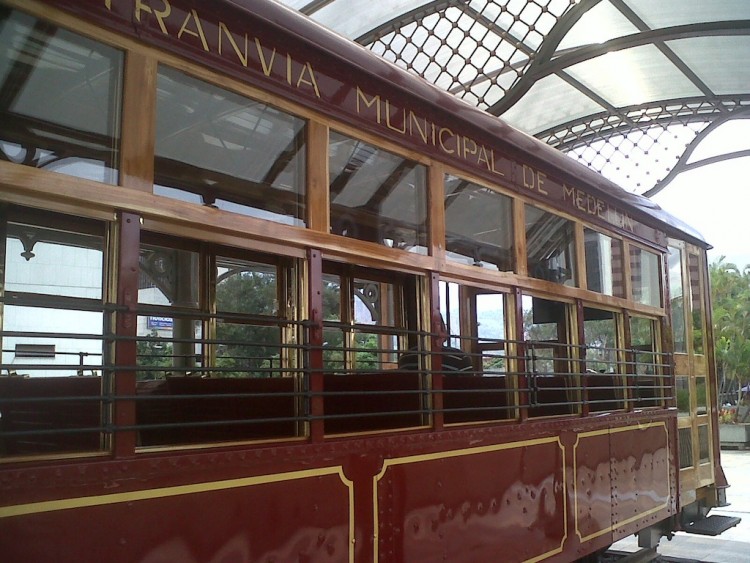
The Tram History in Medellín
Medellín used to have a tram (streetcar) system from 1887 until 1951. The first tram in Medellín was inaugurated in January 1887 and consisted of cars pulled by mules.
The first tram line ran from Veracruz Square to Eden, which is the current Botanical Gardens. Later it was expanded to Avenida Bolivar and Ayacucho. The mule pulled trams operated until 1893 when the tram company closed.
In 1919, the Electric Tramways Company was formed which was part of EPM with the goal to install a new electric tram system in Medellín.
In 1921, the new electric tram system started operating and eventually grew to other parts of the city including Manrique, Robledo, Belén and Envigado.
The electric tram system had problems as it was unidirectional, and there wasn’t space along narrow roads to make it bidirectional. It also ran into capacity issues, as it was popular.
The emergence of private vehicles and the difficulty to upgrade the tram system led to the trams disappearing in Medellín in 1951. When this previous tram system closed, it was carrying about 61,000 passengers daily.
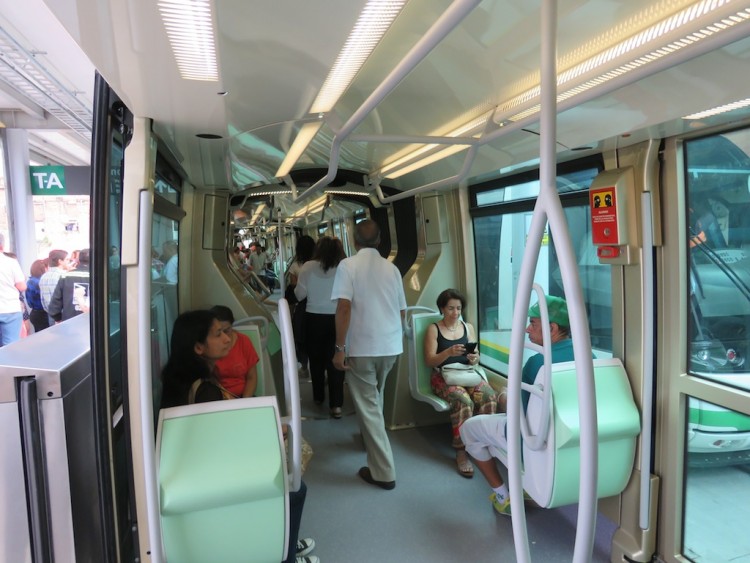
My Experience on the New Tranvía
I went on the new tranvía earlier this week and was impressed. It runs very smoothly and is very quiet.
When I went on the tranvía, it was only taking passengers in one direction towards the San Antonio station but was stopping one station early at the new San José T-A station in front of Iglesia San José in El Centro.
The new stations were not yet 100 percent complete along the new tranvía line including the connection at the San Antonio station. The new stations are planned to be completed next month before it begins full-time operations.
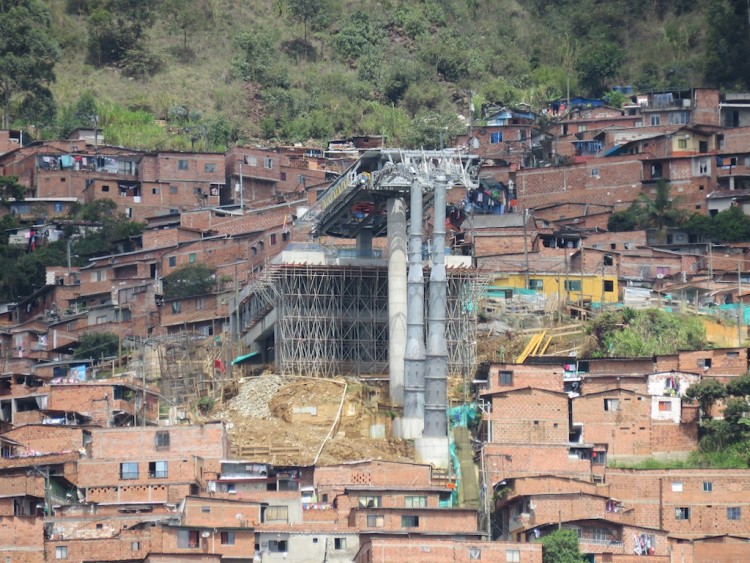
New Metrocable Lines Next Year
Next year the Medellín metro system will be adding two new cable car lines (H and M) from stations along the new tranvía line to poor neighborhoods.
From the new Miraflores station, one of the cable car lines will run to the Pan de Azucar mountain and the other cable car line will run from Alejandro Echavarria station to the La Sierra neighborhood.
The Metrocable Miraflores line is designed to move up to 2,500 passengers per hour. The Alejandro Echavarria line is designed to move up to 1,800 passengers per hour.
The metro system has already bought the new cable cars for this expansion, and they are already building the new cable car stations.
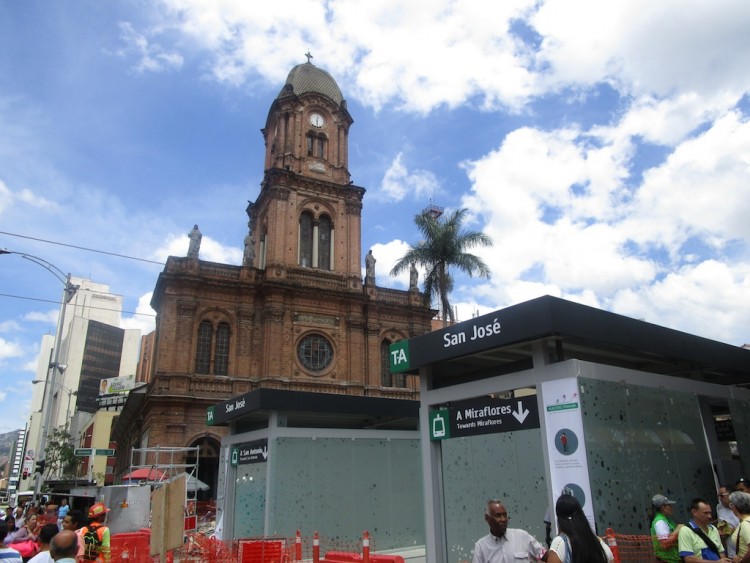
Medellín Metro Master Plan
The Medellín Metro has a Master Plan covering the period from 2006 to 2030.
In this master plan are many expansions to the metro system. The newly opened tranvía line (Corredor Ayacucho) and the new Metrocable lines (L and M) planned for next year are part of this master plan.
Nearer term metro expansions planned in the 2016 to 2020 timeframe include:
- 13.5 km tranvía line along Avenida 80 running from Aguacatala station to Caribe station (this line is in design)
- New metro station between Industriales and Poblado stations
- New metro station between Envigado and Itagüí stations
- More capacity (more trains) added to the main metro Line A
Further out expansions in the Master Plan in the 2021 to 2030 timeframe include:
- Mini-metro line from El Poblado to the South Bus Terminal
- Tranvía line to Rio Negro and the José María Córdova international airport
- Cable car system in Itagüí
- Tranvía line in Sabaneta
So expect to see many more expansions coming to the Medellín Metro system over the next several years. More travía lines, more cable cars, and more metro lines are planned as well as a regional train system.
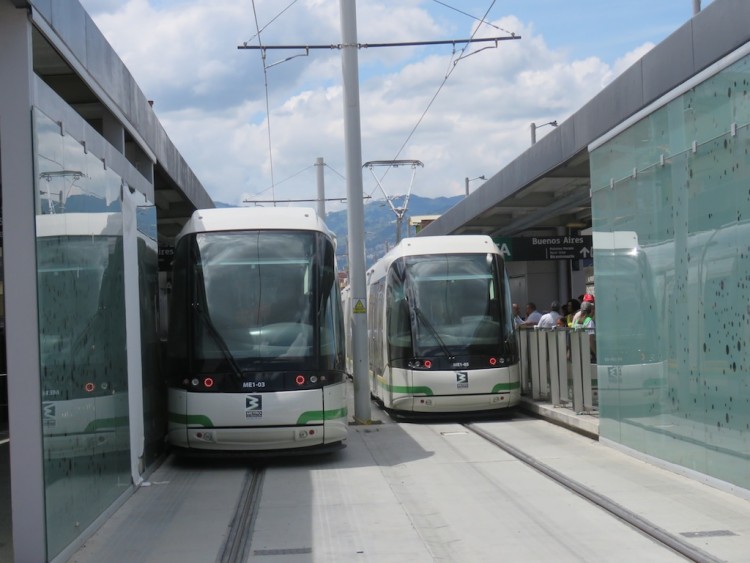
The Bottom Line
Medellín has now had its metro system in operation for 20 years with regular expansions while Bogotá has only been talking about a metro for many years and still has nothing but a plan.
Bogotá’s current plan calls for a one-line metro system to be operational in 2021, which I suspect is likely to be wishful thinking considering the history of big projects in Bogotá.
In this time-frame, Medellín’s metro will continue to expand with its multi-technology system using integrated metro trains, trams, cable cars, elongated Metroplus buses as well as connecting normal buses.
The latest tranvía expansion in Medellín is impressive, and I expect we will see several more tranvía lines added in Medellín.












Thanks for covering this and I wasn’t aware of all the upcoming expansion plans for the metro.
Mr. Thorough.
That’s what I’ll be calling Jeff now.
Great post.